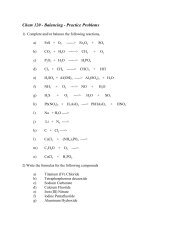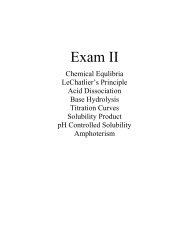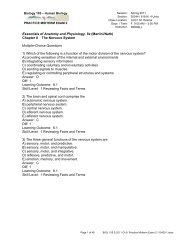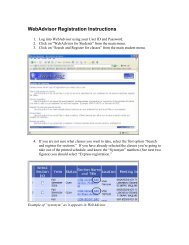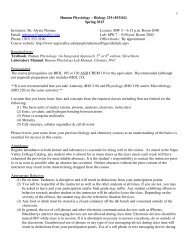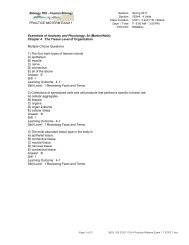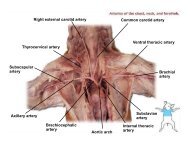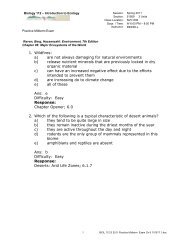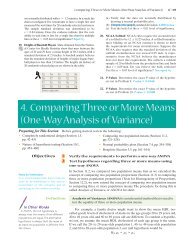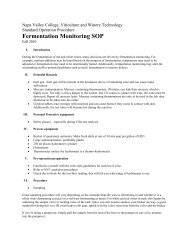Biology 218 – Human Anatomy - RIDDELL - Napa Valley College
Biology 218 – Human Anatomy - RIDDELL - Napa Valley College
Biology 218 – Human Anatomy - RIDDELL - Napa Valley College
Create successful ePaper yourself
Turn your PDF publications into a flip-book with our unique Google optimized e-Paper software.
<strong>Biology</strong> 105 <strong>–</strong> <strong>Human</strong> <strong>Biology</strong><br />
PRACTICE MIDTERM EXAM 1<br />
Session:<br />
Section:<br />
Class Location:<br />
Days / Time:<br />
Instructor:<br />
Spring 2011<br />
55244 4 Units<br />
UVC1, 3 and 7 St. Helena<br />
F 9:00 AM <strong>–</strong> 3:50 PM<br />
<strong>RIDDELL</strong><br />
67) Which of the following problems might be due to injury of structures associated with the hyoid bone?<br />
A) difficulty in swallowing<br />
B) laryngitis<br />
C) soreness upon movement of the back of the tongue<br />
D) A and B<br />
E) A and C<br />
Answer: E<br />
Diff: 1<br />
Learning Outcome: 6-7<br />
Skill Level: 1 Reviewing Facts and Terms<br />
68) Bones within the temporal bone that are important to hearing are called<br />
A) acoustic bones.<br />
B) external acoustic meatus.<br />
C) internal acoustic meatus.<br />
D) auditory ossicles.<br />
E) none of the above<br />
Answer: D<br />
Diff: 1<br />
Learning Outcome: 6-7<br />
Skill Level: 1 Reviewing Facts and Terms<br />
69) The bony structure of the orbit is composed of which of the following?<br />
A) maxilla, zygomatic, lacrimal, and palatine only<br />
B) ethmoid, sphenoid, frontal, lacrimal, maxilla, zygomatic, and palatine<br />
C) zygomatic, nasal, frontal, and sphenoid only<br />
D) zygomatic, nasal, frontal, sphenoid, palatine, lacrimal, and temporal<br />
E) none of the above<br />
Answer: B<br />
Diff: 2<br />
Learning Outcome: 6-7<br />
Skill Level: 1 Reviewing Facts and Terms<br />
70) As you proceed from the head inferiorly down the vertebral column,<br />
A) the vertebrae become larger.<br />
B) the transverse processes become shorter.<br />
C) the body of the vertebrae become heavier.<br />
D) the spinous processes become larger.<br />
E) all of the above<br />
Answer: E<br />
Diff: 1<br />
Learning Outcome: 6-7<br />
Skill Level: 2 Reviewing Concepts<br />
Page 18 of 43 BIOL 105 S 2011 CH 6 Practice Midterm Exam 1 110307.1.doc



